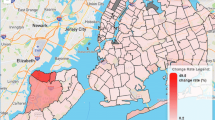Abstract
The database management technology has played a vital role in the advancements of the information technology field. Database researchers are one of the key players and main sources to the growth of the database systems. They are playing a foundational role in creating the technological infrastructure from which database advancements evolve. We analyze the database research publications of nine top-tier and prestigious database research venues. In particular, we study the publications of four major core database technology conferences (SIGMOD, VLDB, ICDE, EDBT), two main theoretical database conferences (PODS, ICDT) and three database journals (TODS, VLDB Journal, TKDE) over a period of 10 years (2001–2010). Our analysis considers only regular papers as we do not include short papers, demo papers, posters, tutorials or panels into our statistics. In this study, we report the list of the authors with the highest number of publications for each conference/journal separately and in combined. We analyze the preference of the database research community towards publishing their work in prestigious conferences or major database journals. We report about the most successful co-authorship relationships in the database research community in the last decade. Finally, we analyze the growth in the number of research publications and the size of the research community in the last decade.






Similar content being viewed by others
Notes
A scientist has index h if h of his N p papers have at least h citations each, and the other (N p − h) papers have at most h citations each.
Given a set of articles ranked in decreasing order of the number of citations that they received, the g-index is the (unique) largest number such that the top g articles received (together) at least g 2 citations.
The reported h-index and g-index information is based on the Publish or Perish software (http://www.harzing.com/pop.htm).
References
Agrawal, D., Das, S., & Abbadi, A. E. (2010). Big data and cloud computing: New wine or just new bottles? Proceedings of the VLDB, 3(2), 1647–1648.
Ailamaki, A., Haas, L. M., Jagadish, H. V., Maier, D., Ozsu, M. T., & Winslett, M. (2010). Time for our field to grow up. Proceedings of the VLDB, 3(2), 1658.
Amin, M., & Mabe, M. (2000). Impact factors: Use and abuse. Perspectives in Publishing, 1, 1–6.
Anderson, T. R., Hankin, R. K. S., & Killworth, P. D. (2008). Beyond the Durfee square: Enhancing the h-index to score total publication output. Scientometrics, 76(3), 577–588.
Bernstein, P. A., DeWitt, D. J., Heuer, A., Ives, Z. G., Jensen, C. S., Meyer, H. et al. (2005). Database Publication Practices. In Vldb, Vienna, Austria (pp. 1241–1246). http://dblp.uni-trier.de/rec/bibtex/conf/vldb/BernsteinH07.
Chen, J., & Konstan, J. A. (2010). Conference paper selectivity and impact. Communications of the ACM, 53(6), 79–83.
Egghe, L. (2006). Theory and practise of the g-index. Scientometrics, 69(1), 131–152.
Florescu, D. (2004). Database research for the current millennium. In Icde, Boston, MA, USA (p. 866). http://dblp.uni-trier.de/rec/bibtex/conf/icde/Florescu04.
Fortnow, L. (2009). Viewpoint—Time for computer science to grow up. Communications of the ACM, 52(8), 33–35.
Halevy, A. Y. (2001). Answering queries using views: A survey. VLDB Journal, 10(4), 270–294.
Hellerstein, J. M., Chaudhuri, S., & Rosenblum, M. (Eds.). (2010). In Proceedings of the 1st ACM Symposium on Cloud Computing, SoCC 2010, Indianapolis, IN, 10–11 June, 2010. ACM, New York.
Hirsch, J. (2005). An index to quantify an individual’s scientific research output. Proceedings of the National Academy of Sciences, 102(46), 16569–16572.
Krapivin, M., Marchese, M., & Casati, F. (2010). Exploring and understanding citation-based scientific metrics. Advances in Complex Systems, 13(1), 59–81.
Larsen, P. O., and von Ins, M. (2010). The rate of growth in scientific publication and the decline in coverage provided by Science Citation Index. Scientometrics, 84(3), 575–603.
Lillquist, E., & Green, S. (2010). The discipline dependence of citation statistics. Scientometrics, 84(3), 749–762.
MacRoberts, M. H., & MacRoberts, B. R. (1996). Problems of citation analysis. Scientometrics, 36(3), 435–444.
Moro, M. M., Braganholo, V. P., Dorneles, C. F., Duarte, D., de Matos Galante, R., & dos Santos Mello, R. (2009). XML: Some papers in a haystack. SIGMOD Record, 38(2), 29–34.
Rahm, E., & Bernstein, P. A. (2001). A survey of approaches to automatic schema matching. VLDB Journal, 10(4), 334–350.
Rahm, E., & Thor, A. (2005). Citation analysis of database publications. SIGMOD Record, 34(4), 48–53.
Shi, X., Tseng, B. L., & Adamic, L. A. (2009). Information diffusion in computer science citation networks. In Icwsm, San Jose, California, USA. http://dblp.uni-trier.de/rec/bibtex/conf/icwsm/ShiTA09.
Sidiropoulos, A., Katsaros, D., & Manolopoulos, Y. (2007). Generalized Hirsch h-index for disclosing latent facts in citation networks. Scientometrics, 72(2), 253–280.
Snodgrass, R. T. (2003). Journal relevance. SIGMOD Record, 32(3), 11–15.
Yan, S., & Lee, D. (2007). Toward alternative measures for ranking venues: A case of database research community. In Jcdl, Vancouver, BC, Canada (pp. 235–244). http://dblp.uni-trier.de/rec/bibtex/conf/jcdl/YanL07.
Author information
Authors and Affiliations
Corresponding author
Rights and permissions
About this article
Cite this article
Sakr, S., Alomari, M. A decade of database research publications: a look inside. Scientometrics 88, 521–533 (2011). https://doi.org/10.1007/s11192-011-0385-y
Received:
Published:
Issue Date:
DOI: https://doi.org/10.1007/s11192-011-0385-y




